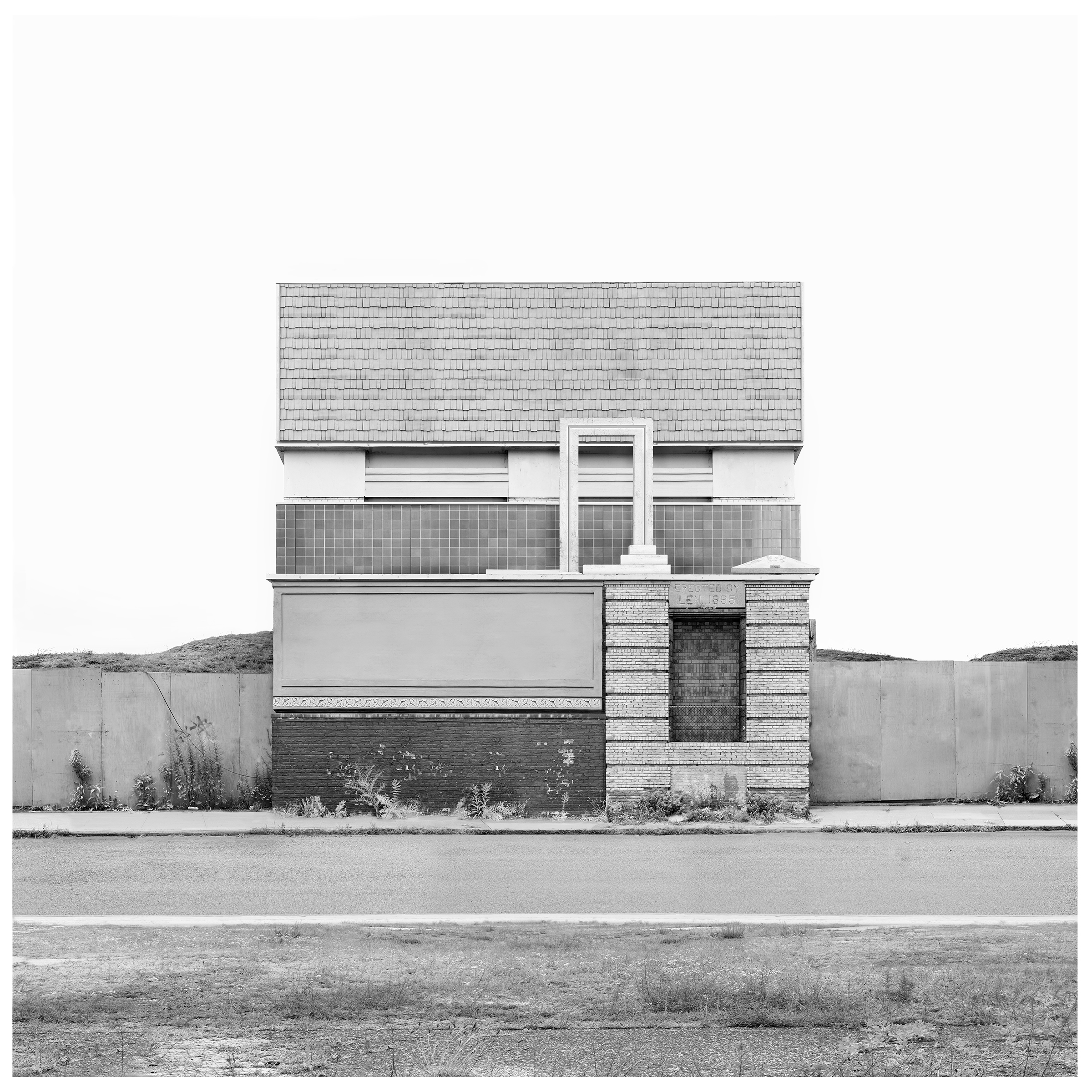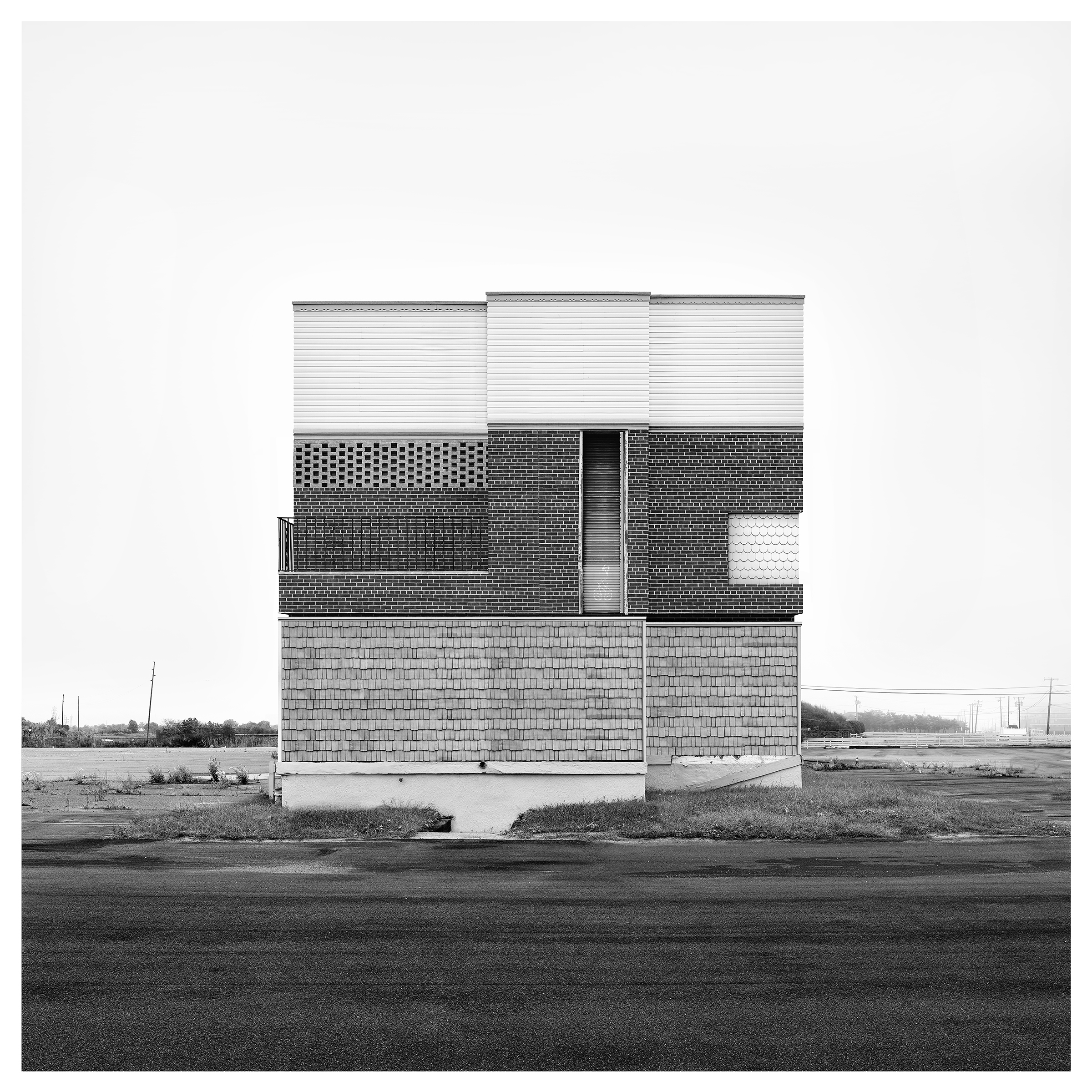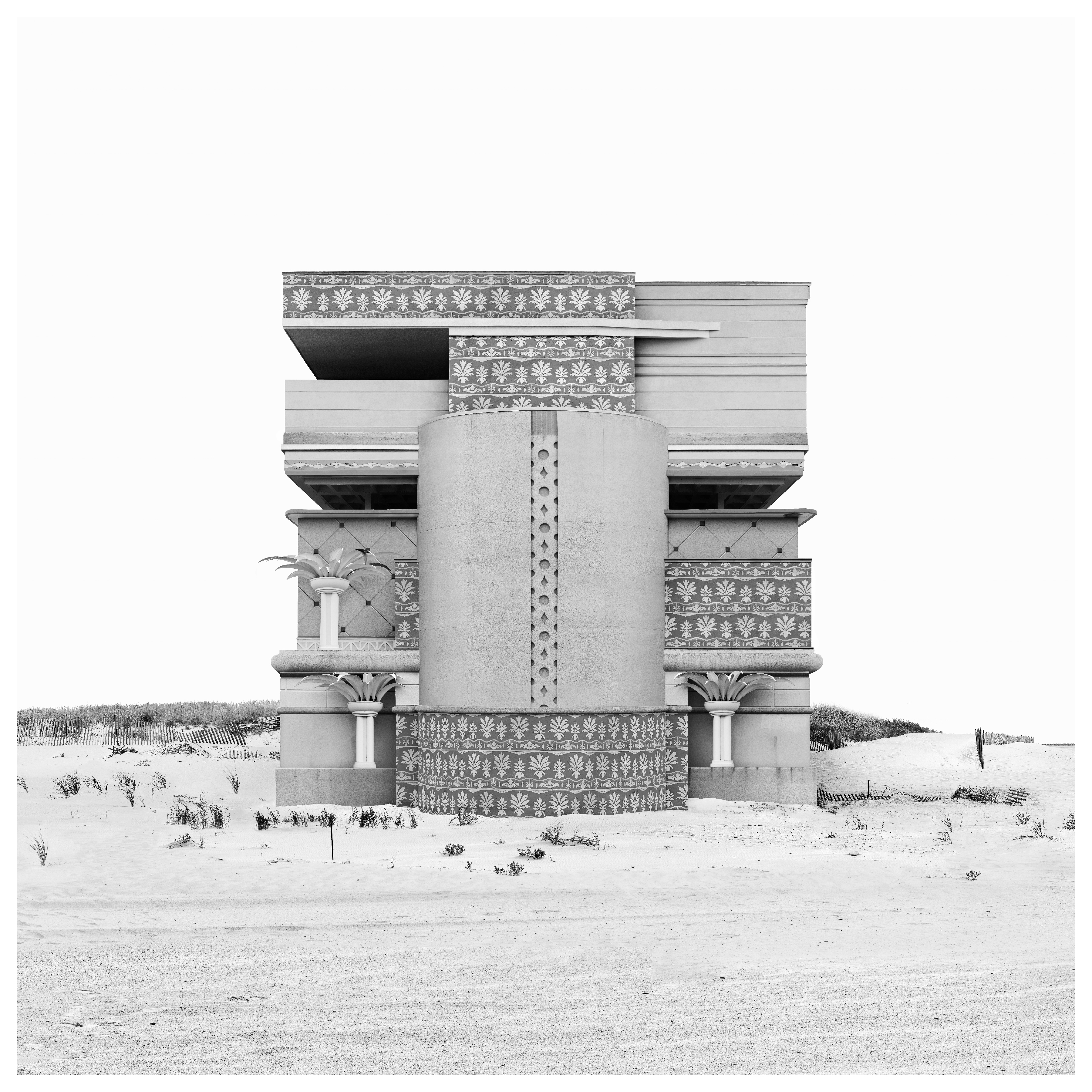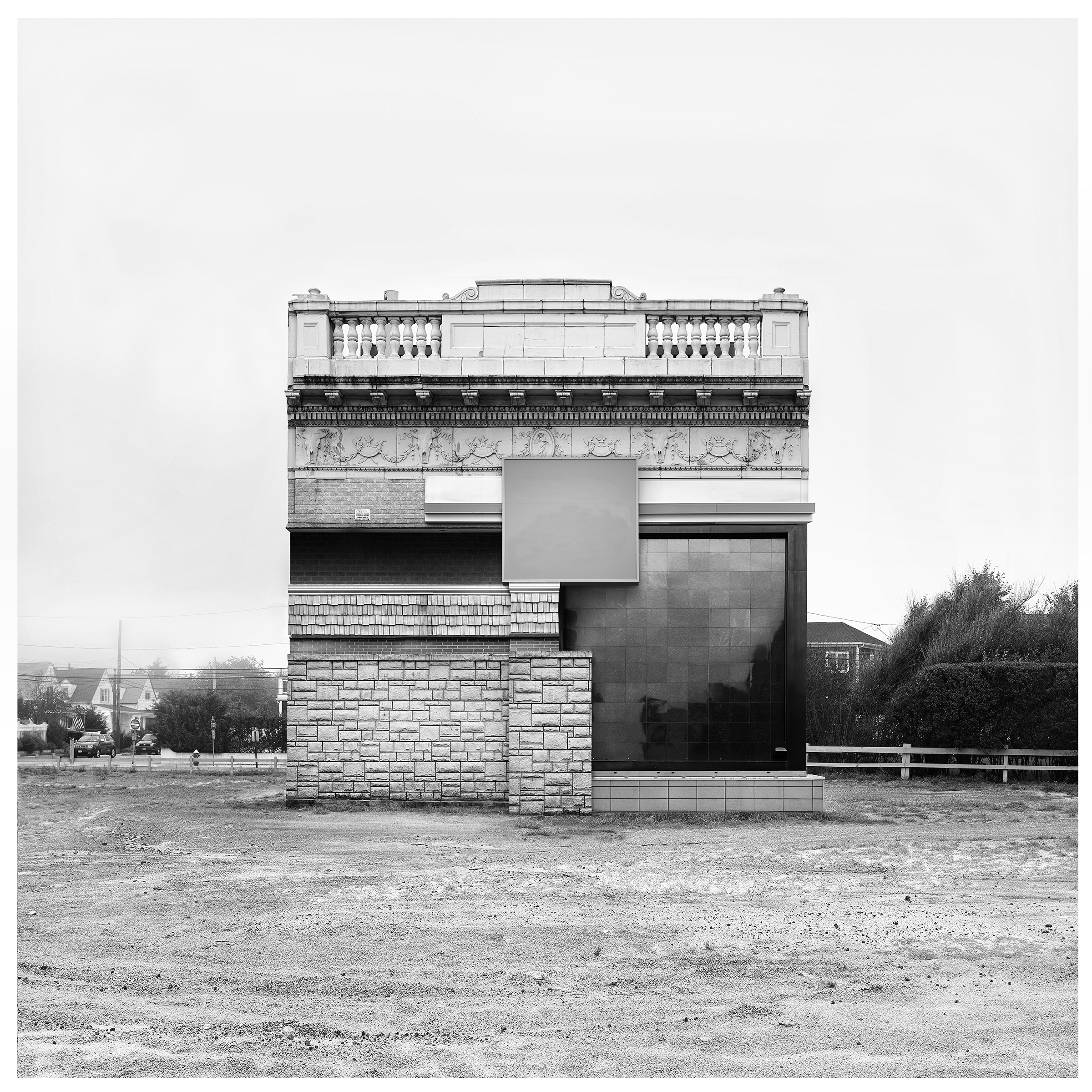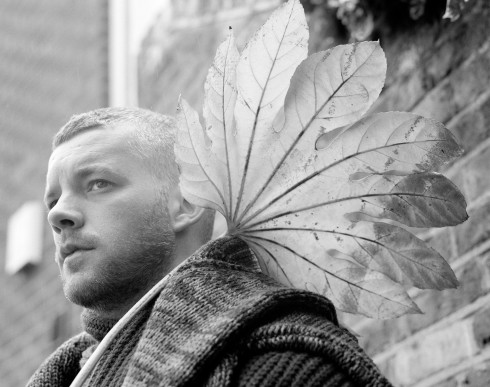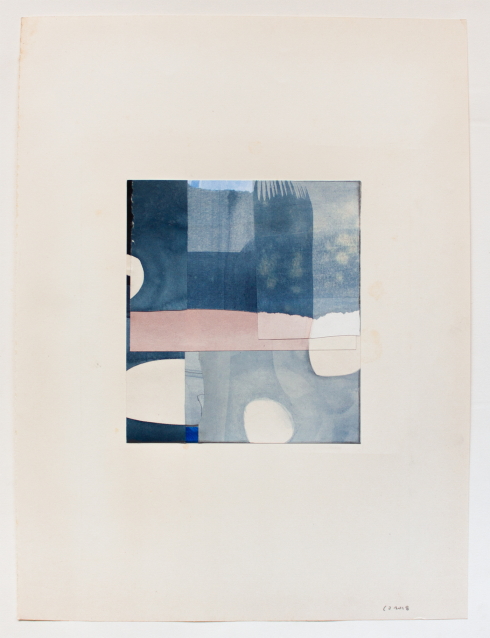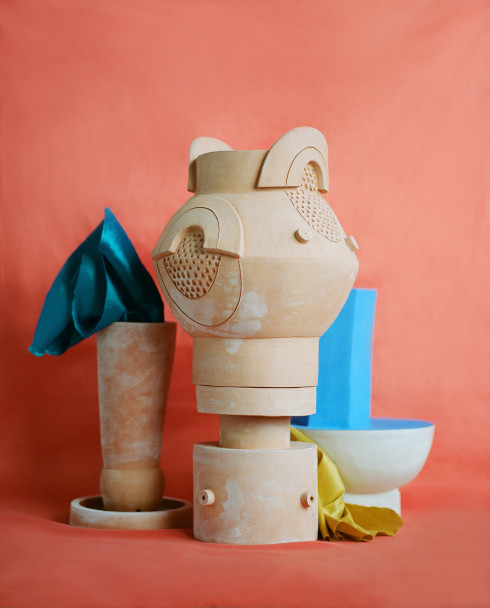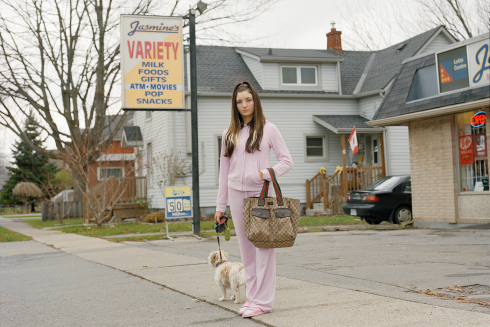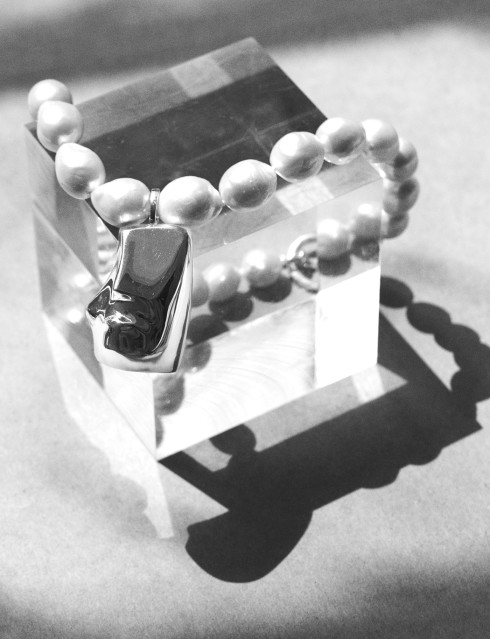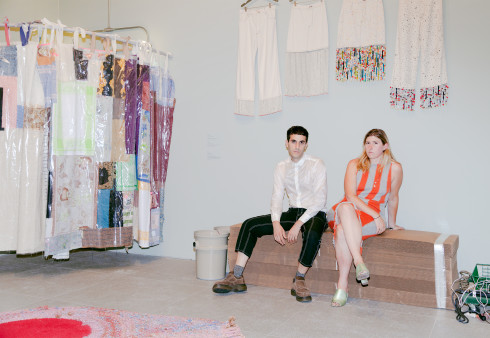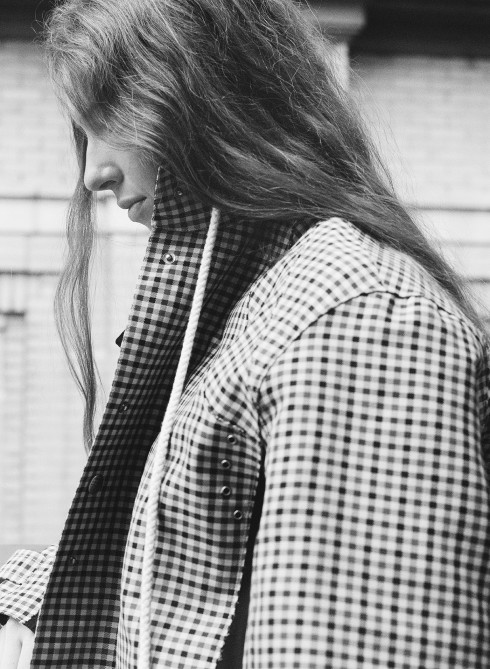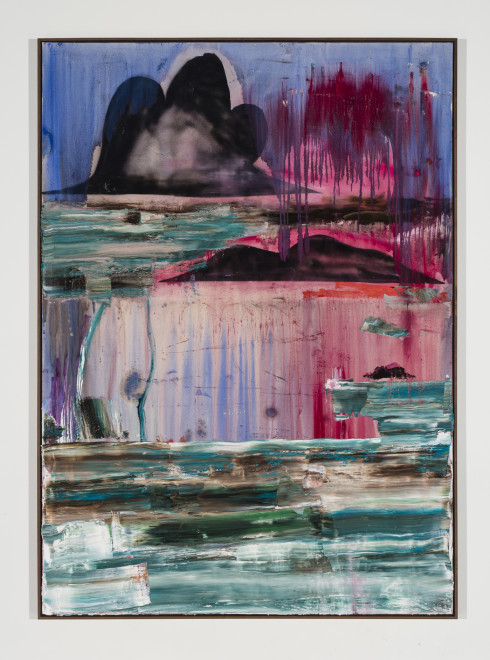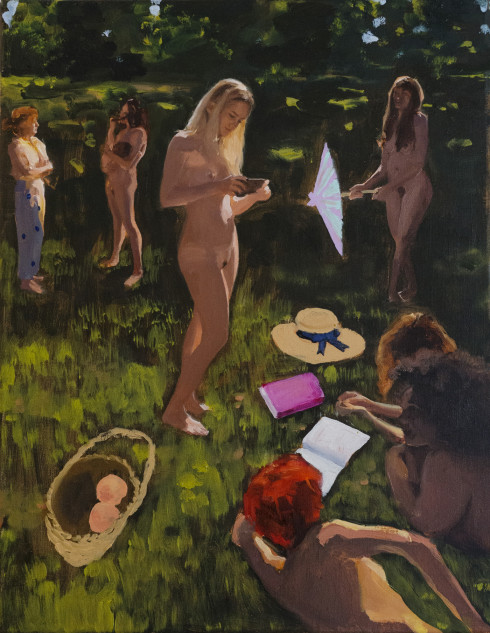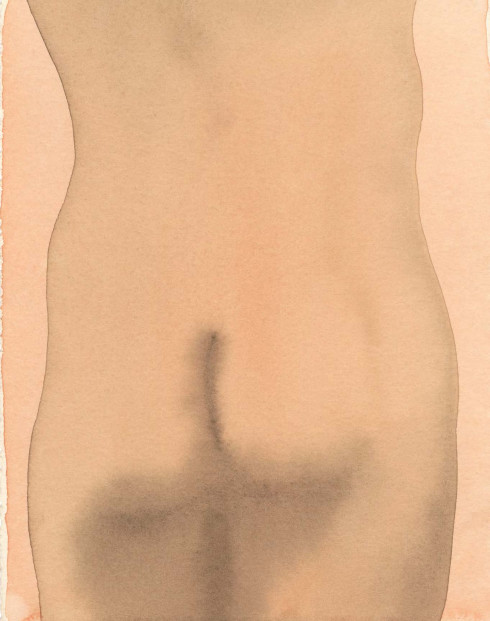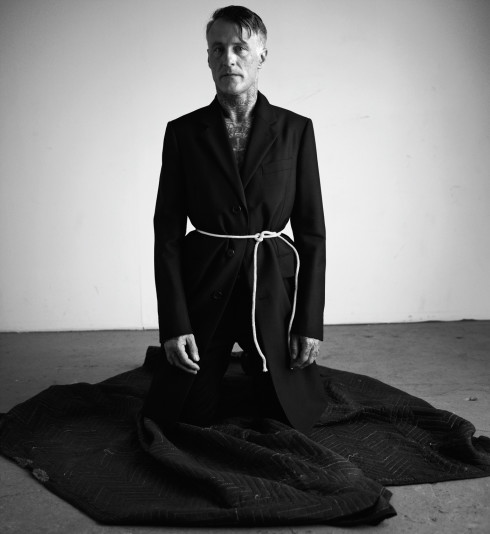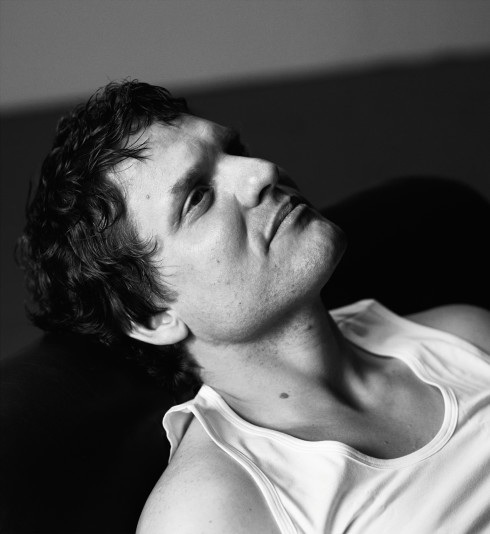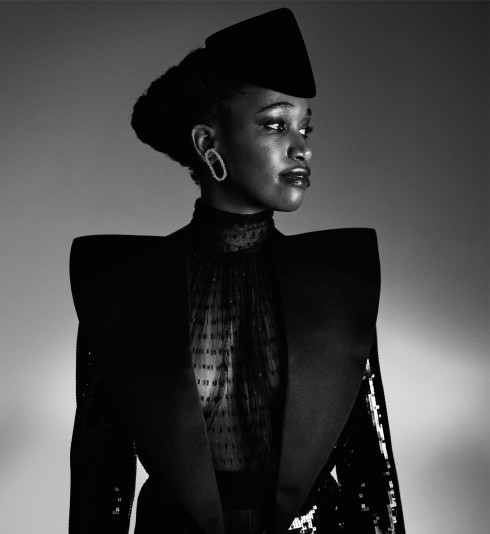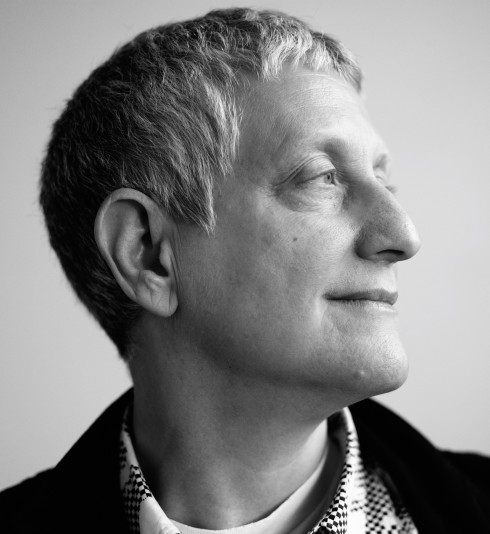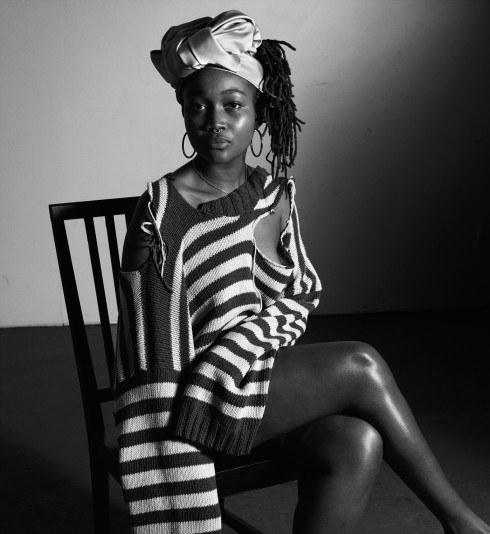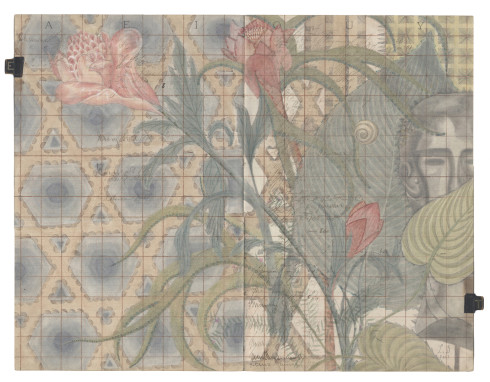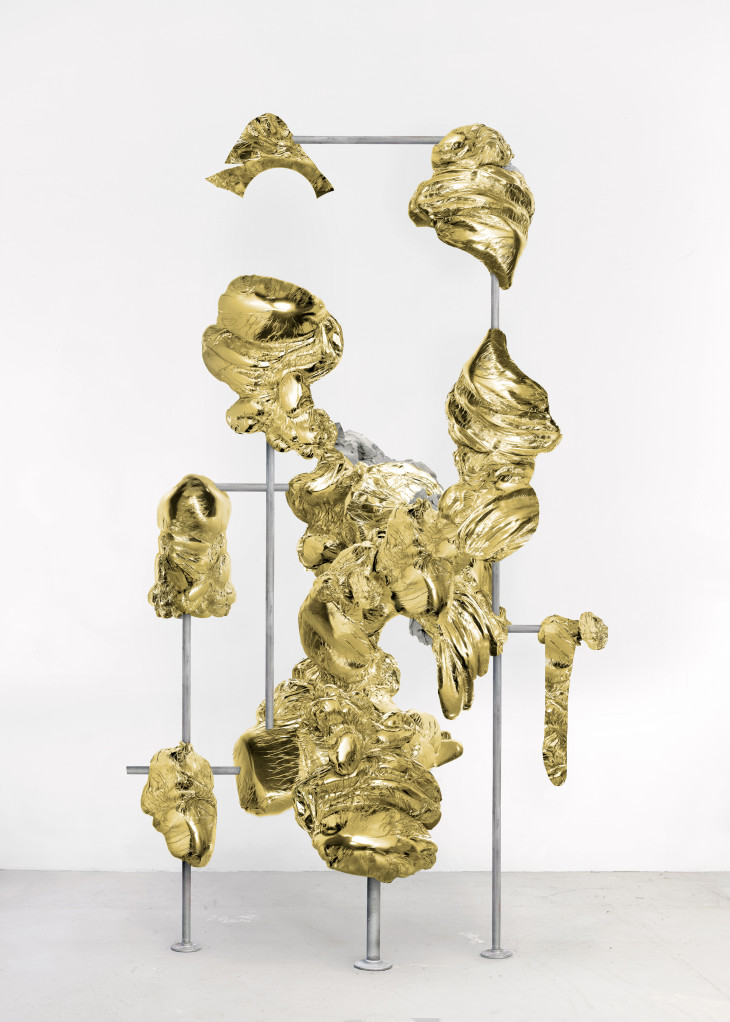
Oliver Michaels, ‘Untitled (Gold Balloon on Clay with Poles),’ 2015. All images courtesy of the artist.
- By
- Kevin Greenberg
OLIVER MICHAELS
The artwork of the British artist Oliver Michaels covers delightfully ambiguous terrain. On the face of things, Michaels’ medium could easily be mistaken for photography. His large-scale images often depict architecturally peculiar and seemingly impenetrable edifices, rendered head-on in the no-nonsense style of the influential New Topographics school of photography. What are these odd structures, seemingly cobbled together of different materials and clashing styles? What and who are they meant for?
Other images, his “Clay Composites,” are yet more perplexing: still-life compositions of gloppy slip (or is it foil? or molten gold?), held together on rude stalks or inset with disposable objects from a party store, queasily scaleless against the bare, white wall of what might be a gallery.
For Michaels, photography is a medium for molding and shaping, much as a sculptor might work clay, but Michaels chooses to sculpt with pixels. His fastidious, labor-intensive approach is rooted in contemporary digital technology and the slippery meaning of photographic reality in the Internet age. His images, by turns whimsical and unsettling, seem to underscore the ever more inescapable notion that objective photographic reality has gone the way of the wet-plate tintype as a quaint relic, a curiosity for historians and nostalgia-obsessed cranks.
“There’s such a crisis in photography now of understanding what truth is,” Michaels says, “that shift away from that idea that there’s any kind of empirical reality around the photograph, that the light has affected the negative, and so on.”
Of the “Clay Composites,” he says, “I wanted to see how it would be different to sculpt these forms using Photoshop versus using gravity, or your thumbs. It’s actually the process of making the piece that’s interesting for me.”
For his architecture series, entitled “Square Within a Square,” Michaels took long strolls through the faded streets of his Brooklyn neighborhood of Greenpoint, taking casual snapshots, assembling raw material for his forays into what he terms “digital bricolage,” much the same way an earlier generation of collage artist might have flipped through the pages of last year’s magazines.
Michaels is quick to emphasize that the pieces only work as long as they retain a foothold in the world of gritty reality, hence the naked industrial backdrops of his architectural composites.
“The second they move too much toward fantasy architectures, they fail,” he stresses, adding that he works hard to maintain an artlessness, a documentary quality, to the images he creates. Michaels’ work is made more rich by that tension, and pivots on that fulcrum: the notion of preserving or instilling in the images a hard-lit reality that feels a world away from Photoshop’s usual forgiving caress, which is typically used to soften or slim, and ease the sad truth of the physical world.
Michaels delights, however, in giving away the game. For the keen observer, or anyone who routinely fires up Adobe Creative Suite for work or pleasure, Michaels mischievously includes telltale visual glitches as a winking trademark, a fond nod to the root techniques of his chosen medium.
“It’s just a simple way to convey to the viewer what’s actually going on. I’m not interested in deceiving people,” Michaels laughs.”I’m just interested in the forms, and in sculpting and creating them using these digital modules, which, if need be, can be broken down to the scale of the individual pixel itself.”
- By
- Kevin Greenberg
